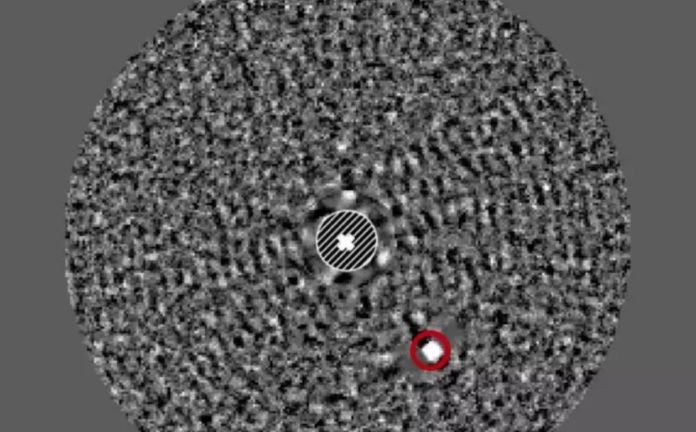Using a novel new search approach, astronomers have directly spotted four stunning new brown dwarfs. In almost 30 years of looking for them, only 40 had been caught.
Brown dwarfs are crucial to our understanding of stellar and planetary populations because they are strange objects that sit on the border between stars and planets.
In nearly three decades of searching, however, just 40 brown dwarfs could be detected surrounding stars. Using a novel creative search approach, an international team led by experts from the Open University and the University of Bern directly observed four new brown dwarfs.
Brown dwarfs are strange celestial objects that fill the space between the heaviest planets and the lightest stars. They have qualities of both stars and planets. These perplexing objects are important for improving our understanding of both stars and large planets because of their hybrid character. Brown dwarfs that orbit a parent star from a reasonable distance away are especially valuable because they may be photographed directly, as opposed to those that orbit too near to their star and are therefore obscured by its light. This gives scientists a once-in-a-lifetime chance to investigate the chilly, planet-like atmospheres of brown dwarf partners.
Despite significant progress in the development of new observing methods and image processing techniques, direct observations of brown dwarf companions to stars have remained few, with only roughly 40 systems observed in nearly three decades of studies. According to a study published in the journal Monthly Notices of the Royal Astronomical Society MNRAS, researchers led by Mariangela Bonavita of the Open University and Clémence Fontanive of the Center for Space and Habitability (CSH) and the NCCR PlanetS at the University of Bern directly observed four new brown dwarfs. This is the first time that more than one new system with brown dwarfs far apart in orbit has been announced at the same time.
A new way to look for things
“Wide-orbit brown dwarf companions are rare to start with, and detecting them directly poses huge technical challenges since the host stars completely blind our telescopes,” Mariangela Bonavita explains. The majority of previous surveys have been based on randomly selecting stars from nascent clusters. Clémence Fontanive notes, “An alternative approach to increase the number of detections is to only observe stars that show indications of an additional object in their system.” The way a star moves under the gravitational pull of a partner, whether that companion is a star, a planet, or something in between, can be an indicator of its presence.
Clémence Fontanive says, “We developed the COPAINS tool which predicts the types of companions that could be responsible for observed anomalies in stellar motions.”
Based on data from the European Space Agency’s Gaia probe, the study team carefully picked 25 nearby stars that were promising for the direct detection of hidden, low-mass companions using the COPAINS instrument.
Using the SPHERE planet-finder on the Very Large Telescope in Chile to observe these stars, they were able to successfully detect ten new companions with orbits ranging from that of Jupiter to beyond Pluto, including five low-mass stars, a white dwarf (a dense stellar remnant), and a remarkable four new brown dwarfs.
Detection rate boost
As Mariangela Bonavita says, “These findings significantly advance the number of known brown dwarfs orbiting stars from large distances, with a major boost in detection rate compared to any previous imaging survey.” While this method is now limited to brown dwarf and star partner signs, future phases of the Gaia project will push these methods to lower masses, allowing the finding of additional large exoplanets.
“On top of having so many new discoveries in one go, our program also demonstrates the power of these search strategies,” Clémence Fontanive says.
“This result was only possible because we believed that, when combining space and ground-based facilities to directly image exoplanets,” adds Mariangela Bonavita.
“We hope that this will be the start of a new era of synergy between different instruments and detection methods.”
Image Credit: M. BONAVITA ET AL., MNRAS
You were reading: Astronomers Find A Record Number Of New Mysterious Objects
